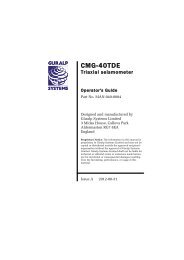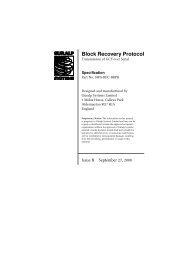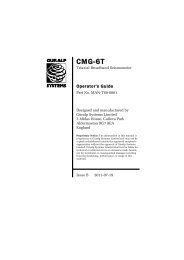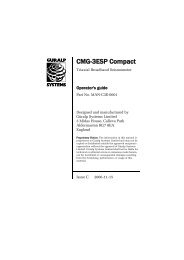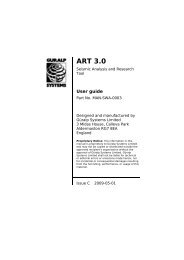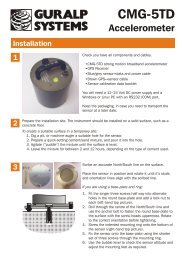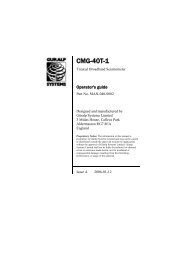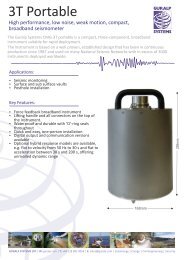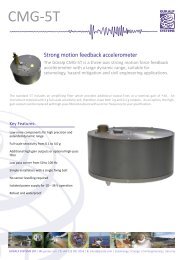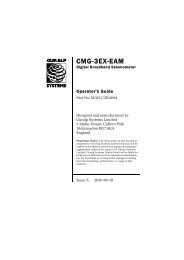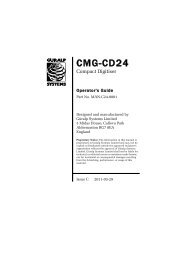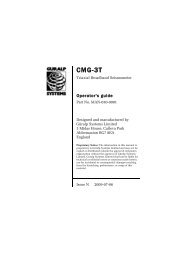linux-tools - Güralp Systems Ltd
linux-tools - Güralp Systems Ltd
linux-tools - Güralp Systems Ltd
Create successful ePaper yourself
Turn your PDF publications into a flip-book with our unique Google optimized e-Paper software.
<strong>Güralp</strong> <strong>Systems</strong> Linux <strong>tools</strong><br />
There will be an estimate of the current NTP error, and whether or not<br />
the clock is locked. The error estimate is also output every second,<br />
along with the NMEA data itself. You can use the error value to<br />
determine what a good value for ntp_max_error should be to get<br />
decent results; the lower the error, the better your lock to NTP.<br />
3.6 cd11-test-recv<br />
This is a CD1.1 receiver which is intended for testing and analysis of a<br />
CD1.1 system or array. It does not store or decode the seismic data,<br />
but instead generates a log file suitable for analysing system operation.<br />
The test receiver allows evaluation of the following:<br />
• authentication (including signature verification)<br />
• data availability<br />
• data timeliness<br />
• data quality (GPS, clock, etc.)<br />
It comes with several <strong>tools</strong> to analyse the log files generated by the<br />
receiver and these generate HTML reports, or graphs using gnuplot.<br />
3.6.1 Running the receiver<br />
To run the receiver, a configuration file must be created. See section<br />
5.4 on page 30 for details of the configuration file. Usage:<br />
cd11testrecv c [s]<br />
If specified, the s flag requests that log messages are printed to the<br />
screen (stderr) rather than sent to syslog. It may be advantageous to<br />
run the receiver in a GNU screen session, perhaps under a tool such as<br />
daemonitor (http://www.lwithers.me.uk/usr/src/daemonitor).<br />
If verification of frames is required, the configuration file points to a<br />
directory of certificates, CERT_DIR. Whenever a frame or subframe is<br />
received, the certificate is looked for at<br />
CERT_DIR/AUTH_KEY_ID.pem (where AUTH_KEY_ID is the base 10<br />
integer representation of the authentication key ID), e.g.<br />
“certs/1.pem” or “certs/57.pem”. Once a certificate has been<br />
loaded, it will never be reloaded. A failure to load a certificate means<br />
the receiver will retry each time it receives another frame or subframe<br />
with a given auth key ID.<br />
14 Issue E




